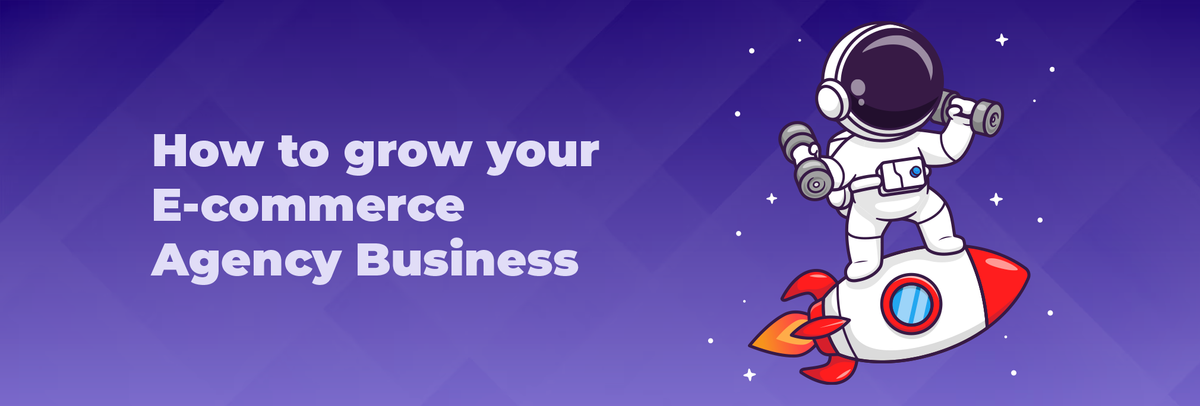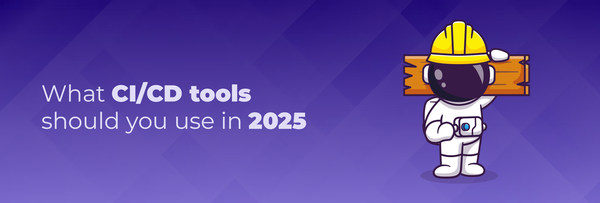How to grow your ECommerce Business

Are you feeling overwhelmed watching your e-commerce business struggle to stand out in the digital crowd?
Are you searching for the elusive formula that propels your business to new heights?
You have landed yourself at the right place.
With so many things coming your way when it comes to e-commerce growth, navigating the terrain can feel a bit daunting sometimes.
But this is where our blog steps in to save the day, for it is here to guide you through the maze swiftly.
And guess what? It's an electrifying time to be in e-commerce! The opportunities are boundless with experts predicting a staggering $7.9 trillion market by 2027!
Let’s explore the secrets to success with expert insights and proven strategies tailored to your business needs.
Key Strategies to Grow Your E-Commerce Business in 2024
Here are some tips and strategies you should consider when growing your e-commerce business in 2024.
- Utilize the Power of Data
What exactly does e-commerce data analytics entail?
It involves the meticulous gathering of data from your e-commerce platform, encompassing metrics like ROI, AOV, site traffic, conversion rates, and instances of cart abandonment.
This data serves as the cornerstone for shaping future marketing and sales strategies.
In e-commerce, data analysis holds paramount importance as the collective findings of more than 48 studies examining shopping cart abandonment rates reveal an average rate of approximately 69.99%.
This statistic has remained relatively consistent since around 2014.
Reasons for abandonment vary, spanning from convoluted checkout processes to website glitches and subpar return policies.
By dissecting website data, e-commerce establishments glean indirect feedback from customers, illuminating areas for improvement and strengths to capitalize on.
Why should tracking data matter to you?
Amidst the cutthroat e-commerce landscape, especially in times of economic uncertainty, every moment and dollar counts.
There's no margin for error in crafting effective on-site strategies and marketing endeavors.
Yet, shockingly, 58% of respondents report that their companies rely on gut instinct or experience for at least half of their routine business decisions, rather than on data-driven insights.
The rationales behind this tendency vary, from a lack of readily available information to a belief in the adequacy of intuitive decision-making.
Further analysis reveals that "best-in-class" companies lean more towards informed decision-making, with 60% relying on data.
In contrast, "laggard" companies exhibit a concerning trend, with a staggering 70% of their decisions based on gut feeling.
For e-commerce enterprises, it's imperative that every decision stems from a foundation of data-driven insights.
By adhering to this principle, businesses can steer clear of pitfalls and navigate towards sustained growth and success.
- Optimize Your ECommerce Website
Optimizing your e-commerce website is essential for attracting more visitors, enhancing user experience, and increasing sales.
Here are key strategies to achieve effective optimization and make your platform one of the best e-commerce sites:
- User-Friendly Design
Did you know that 75% of users assess a company's credibility by its website design?
Ensure your website is easy to navigate with a clear menu structure and intuitive layout.
A clean, uncluttered design with effective use of whitespace improves readability and visual appeal.
Consistent branding across the site, using the same colors, fonts, and imagery, helps build trust and recognition.
Web design statistics reveal that a staggering 94% of initial impressions hinge on design elements.
In a mere 50 milliseconds (0.05 seconds), users determine their preference for a website, dictating whether they stay or leave.
- Mobile Optimization
With a significant number of users shopping via smartphones and tablets, your website must be fully responsive, adjusting seamlessly to different screen sizes.
Simplify navigation and forms, use larger buttons, and ensure fast loading times on mobile devices to enhance the user experience.
Users are 67% more inclined to make a purchase if the website is optimized for mobile devices.
- Fast-Loading Speed to Retain Visitors
Wondering why it is important to have a fast-loading website?
Here’s why:
83% of internet users expect websites to load within three seconds or less. Whereas, 40% of users will leave a website if it takes longer than three seconds to load.
Here’s how you can achieve it to make your platform one of the best e-commerce sites:
- Compress images without sacrificing quality and use appropriate formats like JPEG for photos and PNG for graphics.
- Minimize HTTP requests by reducing the number of elements on each page and combining files like CSS and JavaScript.
- Utilize content delivery networks (CDNs) to speed up content delivery, and implement browser caching to store frequently used resources on users’ devices for quicker load times.
- Effective SEO to Improve Your Website’s Visibility on Search Engines
Conduct thorough keyword research to identify terms your target audience is searching for, and integrate these keywords naturally into your website content, titles, and meta descriptions.
Optimize on-page elements, such as title tags, meta descriptions, headers, and image alt text, to improve search engine rankings.
Ensure your site architecture is clean, use descriptive URLs, and create an XML sitemap to facilitate easier crawling and indexing by search engines.
- CTAs to Guide Users
Did you know that using CTAs as anchor text within your blogs has been shown to boost conversion rates by 121%?
Place CTAs prominently on your homepage, product pages, and throughout the shopping process.
Use action-oriented language and design them to stand out visually.
Conduct A/B testing to determine the most effective CTA texts, colors, and placements.
- Incorporate Relevant Content
High-quality, relevant content is essential.
Provide detailed product descriptions, high-resolution images, and informative videos to help customers make informed purchasing decisions.
Regularly update your content to keep it fresh and engaging. Include customer reviews and testimonials to build credibility and trust.
- Conversion Rate Optimization
Conversion rate optimization (CRO) involves improving elements of your website to increase the percentage of visitors who complete a desired action, such as making a purchase.
Analyze user behavior to identify bottlenecks or drop-off points in the shopping process. Simplify the checkout process by minimizing the number of steps and forms required.
Offer guest checkout options, and multiple payment methods, and ensure clear return policies to reduce cart abandonment rates.
- Enhance Security and Build Trust
Implement an SSL certificate to protect user data and improve search engine rankings.
Display security badges and clearly outline your privacy policy and terms of service to reassure visitors about the safety of their personal information.
Provide clear contact information and responsive customer support to address any concerns quickly.
By focusing on these optimization strategies, you can improve user experience, increase traffic, and boost sales on your e-commerce website, ultimately driving the growth and success of your business.
- Promote Upsells and Cross-Sells
Both upselling and cross-selling techniques provide additional value to a purchase, fostering stronger customer connections and encouraging repeat business over time.
Upselling involves enticing customers to consider purchasing a premium version or an upgraded model of the product they are interested in.
Conversely, cross-selling suggests complementary or related products to customers.
For example, let's say you run a coffee subscription service. Upon a customer's selection of a standard coffee blend subscription, you might present them with an option to upgrade to a premium blend subscription with exclusive flavors and additional benefits.
This is an example of upselling, as you're encouraging the customer to opt for a higher-priced offering with added value.
Cross-selling, on the other hand, could involve offering coffee accessories like mugs, frothers, or grinder sets alongside the coffee subscription.
By showcasing these complementary products, you enhance the customer's experience and increase the overall value of their purchase.
These strategies not only drive immediate sales but also nurture customer loyalty and showcase the diversity of your product offerings.
- Deliver Outstanding Customer Service
80% of businesses intend to boost their investment in customer experience (CX) and it is not without good reason.
An additional method to foster repeat patronage is by guaranteeing the provision of exceptional customer service.
It's vital to acknowledge that the sales journey extends beyond the point of purchase completion.
Unlike physical stores where customers can physically interact with products, online businesses must alleviate concerns by facilitating a seamless purchasing experience.
Moreover, instill confidence in customers by assuring them of your support in case of any issues with their purchase.
Point to Ponder: More than 99.9% of shoppers peruse reviews while making online purchases. Moreover, 49% of consumers place the same level of trust in online reviews as they do in personal recommendations from friends and family.
To sum it all up, growing your e-commerce business requires a multifaceted approach encompassing website optimization, strengthening your online presence, and investing in customer service excellence.
By focusing on these key areas, businesses can attract more clients, drive sales, and build long-term success in the ever-evolving e-commerce landscape.
FAQs
- What are E-commerce Website Solutions?
E-commerce website solutions encompass platforms or services tailored to facilitate the creation, management, and operation of online stores.
These comprehensive solutions integrate features such as customizable templates, secure payment gateways, and efficient product management tools to empower e-commerce companies in establishing and growing their digital presence.
- What Is an E-commerce Store and How Does It Work?
An e-commerce store serves as a digital storefront where businesses showcase and sell their products or services to online consumers.
Through intuitive interfaces, customers browse product catalogs, add desired items to virtual shopping carts, and proceed to checkout.
Secure payment gateways facilitate online transactions, while backend processes manage order fulfillment, shipping, and customer service, ensuring a seamless shopping experience for buyers.
- How Has E-commerce Changed Business?
The advent of e-commerce has catalyzed transformative changes in the business landscape.
By transcending geographical barriers, e-commerce enables businesses to reach a global audience and expand market reach exponentially.
Moreover, e-commerce streamlines operational processes, reduces overhead costs, and empowers businesses to adapt swiftly to evolving consumer preferences.
Through it, businesses embrace digital transformation, driving innovation, and fueling sustainable growth in the digital era.




